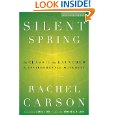Via the Telegraph, their correspondent James Kirkup reports that Liam Fox, the UK’s Secretary of Defence (Defense, if you prefer), has sais that “The Ministry of Defence is facing “cyberwar” attacks on a daily basis.”
Warning that Britain is now in continuous combat with an “invisible enemy” in cyberspace, the Defence Secretary said that the MoD last year detected and blocked more than 1,000 “potentially serious” attempts to infiltrate or disrupt its computer systems.
Speaking to the London Chambers of Commerce defence industry dinner, Dr Fox said electronic attacks on Britain doubled from 2009 to 2010. “There is a continuous battle being waged against us, day in, day out,” he said. Dr Fox’s remarks are the latest Government warning about the scale and severity of electronic attacks on sensitive State computer networks. George Osborne, the Chancellor, last month said that Government computers are receiving more than 20,000 malicious email attacks every month. .
The MoD and its highly sensitive electronic networks are a prime target for people trying to steal secrets or damage critical systems.
“Our systems are targeted by criminals, foreign intelligence services and other malicious actors seeking to exploit our people, corrupt our systems and steal information,” Dr Fox said. “The risks to defence are real, and I take them very seriously.”
